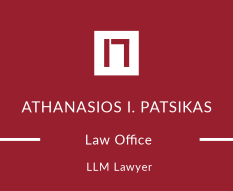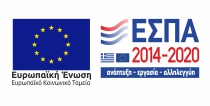Privatizations in the energy sector of the European Union
Publication date: Aug. 11, 2019, 8:35 p.m.Written by Athanasios I. Patsikas
Lawyer (LLM)
Since the beginning of the 20th century, the energy sector in Europe has been developed on a basis of a State - monopolistic legal framework which involved all the relevant activities-pillars of what kind of activities energy law may concern. These are the generation, supply, transmission and distribution of energy to the final recipient. The fact that especially “electricity” was mistakenly considered to deal with quite a few particularities in the competitive level playing field to be traded in (what in other words would we call an “open market”) supported for many years the solid status quo of State ownership. In contrary, in the 1980s this status started coming through the filters of challenge, when finally the notion of liberalization of the energy sector set the cornerstone of competition in the single, European market. New actors, players and new investors emerged to claim their share in the energy market and as a consequence the instrumentalities through which this transition was realized (from the state to private ownership) were in the majority of cases the mergers of companies or acquisitions of their assets by others. The present essay will be orientated in examining the issue of mergers and acquisitions in the light of privatizations in the energy sector of the European Union.
The Merger Regulation which was adopted on 20 January 2004 and entered into force on 1 May 2004 does not prohibit concentrations. Unlike Articles 101 and 102 TFEU the repressive element is absent so the emphasis is on the structure of the relevant market, not on the anticompetitive conduct of an undertaking, so on the one hand, many concentrations are necessary in order to reinforce the competitiveness of EU undertakings, but on the other, concentrations may have damaging effects on the competitive structure of the market1.
As far as how concentrations are interrelated with the liberalization of energy market we may mention some facts: The first "liberalization" directives were adopted in 1996 (electricity) and 1998 (gas), with a deadline for implementation into Member States’ legal systems by 1998 (electricity) and 2000 (gas) and since then there have been a further two "packages" of EU directives and regulations aimed at further, incremental opening of EU gas and electricity markets2. What the case appeared to be is that the crucial point of the liberalization packages till now ended (in 2009) in the unbundling provisions of the activities operated by a vertical integrated energy undertakings in Members States. To put it in a more concrete way, it is prohibited for a VIU to continue operating de facto as such by the time that the same undertaking which operated in the competitive field of activities (generation, supply of energy) is not enabled to interfere directly with the activities of transmission or distribution of energy which are considered as services and are classified in the monopolistic field. The 2009/72/EC and 2009/73/EC introduced the legal, functional and accounting unbundling, the case being that a VIU may own shares of a different legal person acting as Transmission System Operator (TSO) or Distribution System Operator (DSO) but may not appoint the board of directors and it may not transact in the market through the same banking accounts. As a matter of fact, it is obvious that at the end of the day we will have several legal persons in existence for several tasks-activities, with the meaning at the same time that the corporate cost of existence, interference and survival in the field of industry is boosted perhaps to disproportionate standards. This kind of economic “threat” has shed light to concentrations as evitable corporate solutions through coalitions of previously hostile businesses and as a chance of more effective and efficient corporate restructuring in order to achieve both internal and external growth by gaining access to new energy markets. So, at a given time, the liberalization of energy market may jeopardize the existence of a given relevant company but at the end of the day the latter will end up upgraded through a merger.
Actually, it is an obvious common place that States are almost always unwilling to initiate the privatization dialogue, not to mention the materialization of it. The whole conception is a usual cause of headache to the majority of governments. This is why the States introduced their antidote to hook on to the competence of governance of the energy corporations even if they were phenomenally initiating the merger or acquisition of it with foreign or local investors. So let there be “Golden Share”. They are defined as special rights that States retain in certain privatized companies, which do not represent the State’s percentage in shareholding (i.e. no proportionality between capital and control). The “legalization” of these particular competencies derives from public interest reasons. These particular competencies constitute frequently veto rights over certain corporate decisions or powers to inhibit certain acquisitions of shares in the privatized company. They could for instance confer the right to outvote other shareholders at general meetings, or to veto certain decisions of the company, such as the sale of core assets3. Other rights of Golden Shares could follow from provisions in the company’s articles or shareholder agreements intended to ensure that no shareholder is beneficially entitled to an interest in more than a fixed proportion of voting shares4. A third variant enables the government to nominate some of the directors. In some jurisdictions, golden shares have been created under existing company legislation, in others new legislation has been required to introduce State prerogatives in privatized companies5. In fact golden shares were challenged in terms of free movement of capital and in the light of the violation the proportionality principle. There is a significant number of decisions of the ECJ cancelling their effect and considering it incompatible with the freedom of capital movement6. As a matter of fact, the road to privatizations of energy State-entities through mergers based on foreign capital is opened.
A cross border acquisition may eliminate a potential competitor in the acquirer’s home market, or it may remove existing incentives of the acquirer to expand organically into the target’s market7. Moreover, even in cases where a company’s acquisition of a potential competitor could have been perceived as having a positive impact on competition in the target’s market, merger control laws do not usually allow for such benefits to be offset against the harm caused by the elimination of competition in the buyer’s home market8. In decisions such as GDF/Suez, DONG/Elsam, EDF/Segebel, and Fortum Power/E.ON Finland, concerns relating to the removal potential competition were primary reasons for the imposition of remedies as a condition of clearance9.
It is in the electricity sector in particular that mergers have been subject to remedies, notwithstanding the parties’ relatively low combined shares of supply and this is primarily because of the trend in recent years for authorities to analyze the economic effects of such transactions by reference to their impact on "inframarginal" or "peak hour" electricity supply10. Of the cases covered in this special issue, the first example of this is the 2005 merger between Nuon and Reliant11. While the parties’ combined market share would have been less 30%, the combination of their generation capacity would, in the eyes of the Netherlands competition authority (the NMa), have created fresh incentives for the merged entity to "game" the system, by strategically withholding peak time generation capacity, in order to benefit from higher prices for the rest of its expanded generation portfolio12.
The political and economic importance of energy markets has frequently created tension between the focus of merger control on preserving competition, and governments’ wider policy objectives13. In some cases, Member States perceived that a strong national "champion" was essential to ensure security of energy supplies and international competitiveness, even if this was at the expense of competition in domestic markets. However, the EUMR allows only narrowly defined "legitimate interests" to take precedence over competition concerns14, such that governments have only been able to secure this outcome where the deal in question fell to be considered under national merger control rules (i.e. because the EUMR thresholds were not met)15. This was the case for the acquisition of Ruhrgas by E.ON16 - in which the German Minister for Economics overruled (in July 2002) the decision of the Bundeskartellamt to prohibit the deal on the grounds that the merger would improve security of supply and improve E.ON’s international competitiveness – and for Gas Natural’s (ultimately unsuccessful) bid for Endesa, in which the Spanish Council of Ministers ignored the advice of the Spanish Tribunal de Defensa de Competencia to block the transaction17.
In Poland, the NCA issued "extraordinary approvals" for two potentially anticompetitive deals on the grounds that they would improve energy security, create new jobs, and facilitate infrastructure investments, but refused to clear a third on these grounds, despite reported pressure from the Polish government to do so18.
In contrast, when Spain’s national energy regulator sought to impose wide ranging conditions on E.ON’s attempted takeover of Endesa – a transaction that did fall under the jurisdiction of the EUMR – the Commission intervened on the grounds that these conditions went further than necessary to safeguard security of energy supplies and therefore were inbreach of the EUMR and EU prohibitions on restrictions of free movement of capital, a position that was subsequently confirmed by the EU Court of First Instance19.
In the framework of the electric industry, and particularly within the context of the proposed acquisition of joint control over Hidrocantábrico by EDP, EnBW and ajastur20, in spite of the relatively limited market shares –not superior to 10-15%- held by the merging parties in each of the two relevant markets concerned in this case (namely, electricity sold through the wholesale market and retail market), the European Commission decided that the transaction should be “assessed in the light of the high degree of concentration on the Spanish electricity market and of its isolation due to a shortage of interconnections with other systems”21. In this case, the concerns of the European Commission rose from the fact that EdF held joint control over one of the buyers in the operation (EnBW)22. As a result of the proposed merger, the European Commission feared that EdF, absolute dominant player in the generation, transmission, distribution and trading of electricity in France, lacked of incentives to increase the interconnection capacity between France and the Iberian Peninsula, perpetuating one of the most relevant entry barriers to the highly concentrated Spanish market23. We have to underline that this case has been put through the legal framework of the former EU merger regulation, inspired from the dominance test. It was quite evident that the transition to the SIEC test from the dominance test would meet higher standards of reliability and effectiveness as far as the control is concerned. Accordingly, before 2004 the circumstances of dominance had to be rendered as evidence as a presupposition to challenge the whole operation, rather than patrolling the market status in relation to the shares of every actor so that if a merger ended to such a concentration peak, it was very possible for the procedure to be challenged, including in many situations a pure danger of disproportionate actions. In contrary, false negatives (or under-enforcement) were less possible to happen under the dominance test. In this respect, the SIEC test shouldbe useful in order to avoid overlooking some operations that, subject to the preceding test, would have probably received approval of the European Commission24.Hence, the “new” test approaches the horizontal mergers by clearly distinguishing between coordinated and non-coordinated effects which might stem from mergers25.
Almost all the decisions in which coordinated effects have been assessed relate to Germany and that is partly due to legal (and rebuttable) presumptions for collective dominance that exist under German law, which have resulted in considerable scrutiny – and frequently remedies – for mergers in consolidated markets, particularly in the electricity sector26 (including outright prohibition in E.ON/Stadwerke Eschwege)27 and the retail petroleum sector28. Another factor is the historic prevalence of cross-holdings of minority interests that created structural links between rivals in the gas and electricity sectors ; links that were often required to be unwound as a condition of clearance29. In contrast, with the exception of RWE/Essent , the Commission has rejected the possibility of coordinated effects in all energy cases over the past decade in which it has considered these issues (for example, in EDF/Segebel30 , StatoilHydro/Jet31, DONG/Elsam/E2; Sydkraft/Graninge32; and ENEL Acciona/Endesa33.
As the European Commission reminds in the British Energy/ EDF case, the conclusions of the sector inquiry driven in the energy market already warned against mergers that increase the level of vertical integration of the merged entity, as they: “can potentially lead to a decrease of the merged entity’s need to trade with other counterparties in the wholesale markets since part of its power needs might, postmerger, be covered by the merged entity’s own power generation. If this happens, it is possible that liquidity in the wholesale markets is reduced. The market investigation is not conclusive as to whether, in general, there is a direct link between an increase of vertical integration and a decrease in liquidity. However, the market investigation has expressed serious concerns that this particular transaction may in fact have such negative effects on liquidity.”34This concern about vertical mergers must be particularly framed within the context of the new energy package approved by the European Union, and particularly regarding the unbundling alternatives set in the new directive 2009/72. In fact, should the concerns expressed by the European Commission35 about the effectiveness of unbundling options –particularly that not entailing ownership separation- prove to be confirmed (ISO or ITO alternatives resulting in unsuccessful levels of unbundling), the control of vertical mergers will have a more significant role in the completion of the EU energy objectives36.
To sum up, it is common sense that competition has opened new paths to technology development and has set the fundaments for cheap energy for the final recipient. What is yet to come is a more structured framework of liberalization so that third party access can be the rule and the balancing factor of healthy competition in order to go one step further from monopolistic activities and from old-fashioned market profiling and many steps near more effective and reliable energy supply. By that we mean easy structuring, easier re-structuring and the elimination of borders through more feasible cross-border mergers and acquisitions. Perhaps, by engaging into improving the merging process outside the “venomous tit of the State” may be the key to the highway of no new energy packages.
***
1 Alina Kaczorowska European Union Law, 2010 p.909
2 Daniel Harrison,Alastair Mordaunt, e-Competitions | N°49024, www.concurrences.com
3 Mads Andenas and Frank Wooldridge, “European Comparative Law”, Cambridge University Press, 2009, ISBN 978-0-521-84219-8
4 Ibid
5 Ibid
6 Case C-58/99 Commission v Italy, Case C-367/98 Commission v Portugal, Case C-483/99 Commission v France, Case C-503/99 Commission v Belgium, Case C-463/00 Commission v Spain, Case 98/01 Commission v UK, Case C-174/04 Commission v Italy, Joined Cases C-282 and C-283/04 Commission v Netherlands, Joined cases C-463/04 and C-464/04 Federconsumatori and Others (C-463/04) and Associazione Azionariato Diffuso dell’AEM SpA and Others (C-464/04) v Comune di Milano, Case C-112/05 Commission v Germany, Case C-274/06 Commission of the European Communities v Kingdom of Spain, Case C-207/07 Commission of the European Communities v Kingdom of Spain, Case C-326/07 Commission v. Italian Republic, Case C-171/08 European Commission v Portuguese Republic, Case C-543/08 European Commission v Portuguese Republic, Case C-212/09 European Commission v Portuguese Republic, Case C-244/11 European Commission v Greece , Case C-95/12 Commission v. Germany
7 Daniel Harrison,Alastair Mordaunt, | e-Competitions | N°49024 Page 6/19
8 See for example, the judgment of the Court of First Instance in EDP v. Commission (Case T-87/05 , [2005] ECR II-3705) in which the Court found that the Commission had failed to take properly into account the transactions beneficial impact on the liberalisation of gas markets in Portugal, but concluded that this error did not vitiate the prohibition, given the anticompetitive effects arising in electricity markets : “it is quite possible, indeed frequent, that a concentration produces anti-competitive effects on only one, or some, of the markets concerned without having such effects on the other markets. Where that is so, the transaction must none the less be prohibited, in accordance with Article 2(3) of the Merger Regulation. Accordingly, the application of Article 2(3) of the Merger Regulation to the electricity markets is not affected by the error concerning the gas markets.” In contrast, the German NCA has, on occasion, cleared mergers on the basis of remedies that would create competition in one regional market to offset the loss of competition in another – see RWE/SWKN (supra, note 26) and Jonas S. Brueckner, The German Bundeskartellamt cleared a merger in the gas supply market subject to the divestiture of minority stakes in two energy supply companies (E.ON Avacon/WEVG), 19 December 2007, e-Competitions, n° 20792
9 In contrast, in RWE / Essent (supra, note 8), the Commission concluded that the merger would not adversely affect potential competition, as "the market investigation has confirmed that there are currently many projects already in the pipeline by more than five competitors" and that various competitors had "confirmed that they are planning to enter the wholesale market."
10 Daniel Harrison,Alastair Mordaunt, | e-Competitions | N°49024: As electricity cannot be stored, generation capacity is used in accordance with its efficiency in terms of marginal costs, and its flexibility : the most efficient "base load" capacity runs almost continuously, as it is profitable at any prevailing market price, while less efficient "peak hour" capacity is switched on only in times of higher demand and market prices. The market price is effectively determined by the least efficient capacity that can be operated profitably at a given level of demand. This capacity is referred to as "infra-marginal" or "peak hour" capacity.
11 See Martijn Snoep, The Dutch energy sector mergers under the aegis of Courts and Regulators : Main 2005-2007 decisions (Essent/Nuon, Reliant/Nuon...), November 2006, e-Competitions n° 13305 ; Sebastian Vos, The Dutch Trade and Industry Appeals Tribunal confirms the annulation of the NCA merger decision having imposed electricity auction as remedy on the wholesale electricity market (Nuon/Reliant), November 2006, e- Competitions n° 13250 ; Jan Peter van der Veer, A Dutch Court annulls an NCA decision having cleared a merger between electricity companies conditional on a structural remedy for not having sufficiently demonstrated that the merger would lead to the creation or strengthening of a dominant position as a result of which competition would be significantly impeded (Nuon/Reliant), November 2006, e-Competitions n° 22143
12 Strategic withholding of generation capacity has also been pursued by the Commission as an abuse of dominance under Article 102 TFEU. Roberto Grasso and John Ratliff, Unilateral conduct in the energy sector : An overview of EU and national case law, e-Competitions n° 44203 ; and David Broomhall, Stephan Manuel Nagel and Ulrich Scholz, Restrictive practices in the energy sector : An overview of EU and national case law, e-Competitions n°41759
13 For a non-sector specific analysis of protectionism in the EU, see Alex Nourry and Nelson Jung, Protectionism in the age of austerity – a further unlevelling of the playing field ?, Competition Policy International (2012), Vol. 8(1).
14 Article 21 of the EUMR. The Commission has accepted that these may include measures that are necessary and proportionate for the protection of security of supply and
the respect of national regulatory requirements, such as the separation of generation and supply of electricity – see Lucrezia Busa, Elisa Zaera Cuadrado, The European Court of Justice rules on the application of Article 21 of the Merger Regulation (E.ON, Endesa), 6 March 2008, e-Competitions, n° 35266
15 Daniel Harrison,Alastair Mordaunt, | e-Competitions | N°49024 Page 8/19: In particular, the EUMR does not apply to transactions in which each of the merging parties generates more than two thirds of their EU-wide turnover in one and the same EU Member State, regardless of whether the other jurisdictional thresholds are satisfied. This rule became the focus of another stage of the battle for Endesa, when Endesa sought a ruling from the EU Court of First Instance that Gas Natural’s takeover did not satisfy the two-thirds rule and therefore should have been reviewed under the EU Merger Regulation. See Case T-417/05 , Endesa v Commission [2006] ECR II-2533
16See Bundeskartellamt press release, Bundeskartellamt prohibits E.ON/Gelsenberg (Ruhrgas) merger, 21 January 2002, available at : http://www.bundeskartellamt.de/wEng.
17See Daniel Domínguez Muñoz, The Spanish Council of Ministries cleared with remedies a merger in the natural gas sector, in spite of the NCA’s opinion to block the transaction (Gas Natural / Endesa), 5 January 2006, e-Competitions, n° 22231
18 See PGE/Energa
19 Article 21 of the EUMR. The Commission has accepted that these may include measures that are necessary and proportionate for the protection of security of supply and the respect of national regulatory requirements, such as the separation of generation and supply of electricity – see Lucrezia Busa, Elisa Zaera Cuadrado, The European Court of Justice rules on the application of Article 21 of the Merger Regulation (E.ON, Endesa), 6 March 2008, e-Competitions, n° 35266
20 European Commission case M.2684 - EnBW / EDP / Cajastur / Hidrocantabrico (2002).
21 Regulation (EC) No 713/2009 of the European Parliament and of the Council of 13 July 2009, establishing an Agency for the Cooperation of Energy Regulators
22 Electricity Merger Control in the Light of the EU "Third Energy Package" by J. Velasco Fernández, ISSN
1875-418X, Issue (Provisional), Published April 2010
23 The definition of the relevant product markets was initially settled in the electricity market by differentiating between the generation, transmission, distribution and supply activities. When it comes to this last field, the European Commission has considered, and finally accepted according to the degree of liberalization achieved in each EU Member State, the segregation between wholesale and retail activities. Thus, the European Commission decisions in cases such as EDF/ Louis Dreyfus (M.1557 -1999); Grupo Villar Mir/ EnBW/ Hidroelectrica del Cantabrico (M.2434 - 2001); or the above mentioned EnBW/ EDP/ Cajastur / Hidrocantabrico, show how the definition of the relevant product markets (and particularly the ones related to supply activities) will vary according to the existing degree of liberalization. In that sense, in the projected acquisition of Hidroelectrica del Cantabrico by Grupo Villar Mir and EnBW taking place in Spain, the distinction between “the electricity offered through the wholesale market (the pool and bilateral contracts between eligible customers [-those which are free to choose among suppliers-] and generators) and the electricity offered subsequently by traders to eligible customers (retail market)” was made. When it comes to the geographic scope, different factors and particularly the physical constraints (lack of cross boundary transmission capacity) and regulatory divergences between the EU countries lead to the definition (except in few exceptions mentioned before –e.g. Scandinavian markets-) of relevant geographical markets at a national level.
24 See MARTHA M. ROGGENKAMP,ULF HAMMER, EUROPEAN ENERGY LAW REPORT II (2005).
25The review of potential post-merger non-coordinated conducts of non dominant companies traditionally applied by the DOJ/FTC contrasted for a long time with the “dominance test” applied by the European Commission until 2004, which, by making dominance a necessary requirement, prevented the competition authority to challenge anticompetitive concentrations not leading to the creation of a market dominant company (frequently occurring in mergers between companies producing close substitutes). This so-called “enforcement gap” of the EU merger regulation, was finally closed by the new Regulation 139/2004 and its new “SIEC” merger test, explained in following sections of this paper. For a closer debate of this issue, see Claus-Dieter Ehlermann, Sven B. Volcker and G. Axel Gutermuth, Unilateral effects: the enforcement gap under the old EC Merger regulation (World Competition, 2005)Furthermore, this point makes the difference with the previous approach, whereby mergers which did not create or strengthen a dominant position could not be challenged by the European Commission.
26 Daniel Harrison,Alastair Mordaunt, | e-Competitions | N°49024 Page 6/19: See, for example, Felicitas Haselmann, The German Federal Cartel Office cleared the acquisition by RWE of stakes in four public utility companies with remedies, comprising the sale of shares in two other public utility companies (RWE/Wuppertal/Velbert/Remscheid/Oberhausen), 26 August 2003, e-Competitions, n° 22343
27 Daniel Harrison,Alastair Mordaunt, | e-Competitions | N°49024 Page 6/19: See Sebastian Peyer, The German Federal Court of Justice confirms the prohibition of a merger in the electricity market (E.ON/Stadtwerke Eschwege), 11 November 2008, e- Competitions n° 23819
28 In Total/OMV the presumption of collective dominance was subsequently found by the German Court of Appeal to have been rebutted. See Tobias Caspary, The Dusseldorf Court of Appeals annuls the decision by the German Federal Cartel Office which prohibited a petrol distributor acquiring 59 petrol stations (Total/OMV), 4 August 2010, e-Competitions n° 33236 . Other cases include Shell/HPV (supra, note 16) ; Shell/DEA (supra, note 16) ; and BP/E.ON (see Michael Rauber, The German Federal Cartel Office cleared a merger in the energy market with remedies, including the divestment of gas stations and a stake in a refinery as well as a three year obligation to supply third parties with aviation fuel (BP/ E.ON), 19 December 2001, e-Competitions, n° 25734 ). Remedies were also imposed to address coordinated effects in the Spanish retail petroleum sector in DISA/Shell – see Daniel Domínguez Muñoz, The Spanish Competition Authority cleared with remedies a merger in the fuel sector but the Council of Ministries increased the potential duration of one of the remedies (DISA/Shell), 20 December 2004, e-Competitions, n° 20856
29 See, e.g. Jonas S. Brueckner, The German Bundeskartellamt cleared two downstream acquisitions of shares in the energy market subject to the divestiture of a minority stake (RWE/SWKN), 23 October 2007, e-Competitions, n° 20764
30 See Krisztian Kecsmar, Raphael de Coninck, Augustijn Van Haasteren, Pablo Asbo, Cyril Hariton and Polyvios Panayides, The European Commission approves subject to remedies acquisition in the Belgian electricity market (EDF, Segebel), November 2009, e-Competitions n° 34864.
31 See Donath, Elzbieta Glowicka, Cyril Hariton, Philippe Redondo, Jérôme Cloarec, Dag Johansson, The European Commission conditionally approves a merger in the retail fuel sector using customers surveys and econometrics studies in order to assess the likelihood of anticompetitive effects (StatoilHydro, Jet), 21 October 2008, e- Competitions, n°35129
32 Case No. COMP/M.3268, Commission decision of 30 October 2003
33 Case No. COMP/M.4685, Commission decision of 13 June 2008
34 Case No COMP/M.5224 - EDF / British Energy, point 40.
35 Speech Neelie Kroes, More competition and greater energy security in the Single European Market or
electricity and gas (Berlin, 30 March 2007).
36 Indeed, mergers leading to the vertical integration of electricity generation, supply and transmission activities might drive, in the absence of effective unbundling, discriminatory treatment in the access to transmission facilities and, therefore, the foreclosure of the markets and failure to achieve the energy integration market objective.




